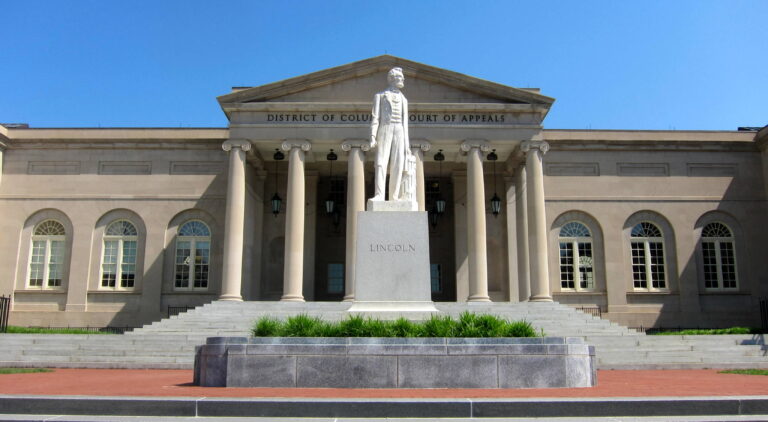Jake Rosenfeld is Associate Professor of Sociology at Washington University-St. Louis. He is the author of What Unions No Longer Do (Harvard University Press, 2014). For more on his work, see www.jakerosenfeld.net.
Jake Rosenfeld is Associate Professor of Sociology at the University of Washington and Co-Director of the Scholars Strategy Network Northwest. His book on the consequences of labor union decline, What Unions No Longer Do, is available from Harvard University Press.
A common narrative of organized labor portrays unions as self-interested organizations focused solely on preserving their members’ prerogatives. Such a perspective ignores the various ways in which unions have fought and continue to fight for the economic security of nonmembers, as well as members. For example, unions have provided the organizational and financial resources behind the numerous minimum wage campaigns, fast food worker actions, and other high-profile battles to raise the living standards of low-wage workers in the U.S. These efforts follow decades of other political and economic fights by unions to reduce poverty in the U.S. Historically, unions have played a vital role in supporting the most vulnerable, despite the fact that very few union members were then, or are now, themselves poor.
Yet even as organizations acting in their own self-interest, unions can still benefit non-members. How so? By the late 1940s, the labor movement had organized roughly a third of all nonfarm workers in the U.S., including such major industries as auto and steel. With that high level of density, many industry leaders were organized companies. What that meant was that many non-union firms matched the pay scales and benefit packages of their unionized competitors. They did so for two main reasons. The first is that if you’re a new business owner looking for guidance on how to set wages at your firm, you’ll often look to – and then mimic – what the successful firms in your industry are doing. If those firms happen to be unionized, then you’re paying union-level wages regardless of whether your own workforce is organized. The second reason is more straight-forward: many non-union companies then as now wanted to stay that way, and one tried-and-true tactic to remain union-free was to keep the workforce happy. An obvious strategy to maintain high morale at work is to pay your employees relatively well, sometimes even as well as your unionized competitor, thus lowering your own workers’ incentive to unionize.
These “spillover” or “threat” effects of a powerful labor movement were once substantial. In research I’ve done with Bruce Western of Harvard University, we found that the shrinking number of male workers who are organized in the private sector is as important to rising inequality as growing demand for highly educated workers. We found that between the early 1970s and 2007, roughly 1/3 of the increase in wage inequality among men working full-time jobs in the private sector was due to union decline. Growing pay differentials between the college educated and everyone else explained a similar amount of the rise in wage dispersion. We examined not simply how unions raised the pay of their members, but also how unions influenced the pay of non-union workers employed in industries and locales that had a large union presence. Approximately 40% of the overall effect of unionization on inequality stemmed from the ability of unions to raise wages among nonmember workers in highly organized segments of the economy.
As I explore in my recent book, with private sector organization rates approaching 5%, this ability of unions to influence non-union workers’ pay has been drastically reduced. Many unorganized firms no longer worry about the prospects of an organizing drive given labor’s weakened state – the threat has vanished. And frequently it is non-union firms that set pay and benefit standards across entire industries. For example, with automobile workers, the non-union foreign manufacturers increasingly set contract standards for the rest of the industry. In recent years Ford has used Toyota’s contract with its factory workers in Georgetown, Kentucky, as a benchmark in negotiations. Across the entire private sector, I find that among men, the union influence on wages for nonmembers fell by over 40 percent between the early 1970s and today. Among women, the drop-off was just as substantial, and the magnitudes of the unionization effects on nonmembers were much smaller.
Thus, the channels through which unions influenced non-union workers’ pay – either by establishing general wage norms mimicked by non-union competitors, or through the threat of unionization – have been nearly shut. It used to be different. A powerful labor movement operating in its own self-interest once restrained inequality and provided for broad-based prosperity simply by fulfilling its core mission: providing for its members.






Daily News & Commentary
Start your day with our roundup of the latest labor developments. See all
December 22
Worker-friendly legislation enacted in New York; UW Professor wins free speech case; Trucking company ordered to pay $23 million to Teamsters.
December 21
Argentine unions march against labor law reform; WNBA players vote to authorize a strike; and the NLRB prepares to clear its backlog.
December 19
Labor law professors file an amici curiae and the NLRB regains quorum.
December 18
New Jersey adopts disparate impact rules; Teamsters oppose railroad merger; court pauses more shutdown layoffs.
December 17
The TSA suspends a labor union representing 47,000 officers for a second time; the Trump administration seeks to recruit over 1,000 artificial intelligence experts to the federal workforce; and the New York Times reports on the tumultuous changes that U.S. labor relations has seen over the past year.
December 16
Second Circuit affirms dismissal of former collegiate athletes’ antitrust suit; UPS will invest $120 million in truck-unloading robots; Sharon Block argues there are reasons for optimism about labor’s future.